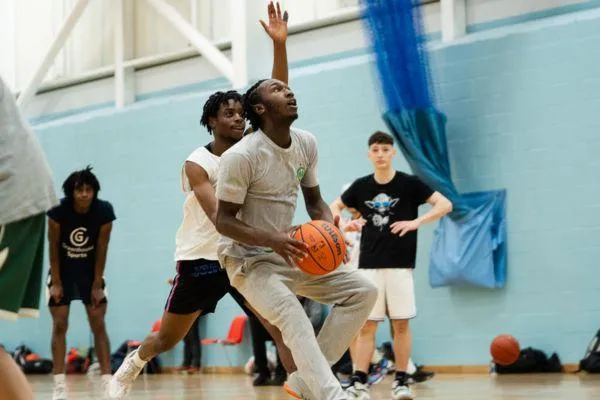
The Truth About AAU and Youth Basketball Development: What Young Players Actually Need to Focus On
The Truth About AAU and Youth Basketball Development: What Young Players Actually Need to Focus On
AAU basketball and youth leagues dominate the basketball world. For many young players, it’s their main exposure to high-level competition—traveling to tournaments, playing in packed gyms, and competing against the best talent.
It looks like the perfect setup for development. But is it really helping players get better?
The truth is, AAU and most youth basketball systems are flawed. They prioritize games over development, highlight reels over fundamentals, and exposure over long-term improvement.
For players in Oakville and beyond, understanding what actually matters in development is crucial. Here’s what’s really going on—and what young hoopers should be focusing on instead.
The Problem with AAU and Youth Basketball
AAU has turned into a business. Many programs care more about winning tournaments and gaining recognition than actually developing players.
🚨 Why This Hurts Development:
•Players play too many games and don’t train enough.
•Coaches focus on quick wins instead of long-term growth.
•Players rely on athleticism and highlight plays, instead of developing real basketball skills.
A young player might play 40+ games in a summer, but if they’re not working on their skills outside of those games, are they actually improving?
Games vs. Training: The Balance is Off
Playing games is important. But when games completely replace skill development, players stop improving.
🚨 The Problem:
•Players repeat the same mistakes in games because they don’t train enough to correct them.
•They learn bad habits because they only play to win, not to improve.
•They rely on natural ability instead of developing real basketball skills.
✅ The Fix:
•Games should be a test of what’s been trained, not the entire training process.
•Players need to prioritize skill work—not just showing out in tournaments.
•Instead of just playing, players should study film, refine their technique, and work on weaknesses.
The best players train more than they play. They use games to measure improvement—not as their only form of development.
Why AAU Doesn’t Teach Basketball IQ
AAU games are often fast-paced, unstructured, and chaotic. While this makes for exciting basketball, it doesn’t always teach players how to think the game.
🚨 The Problem:
•Players don’t learn how to read the game—they just try to make highlight plays.
•Spacing, off-ball movement, and real offensive concepts aren’t emphasized.
•Teams rely on isolation and raw talent instead of real strategy.
✅ The Fix:
•Players need to study the game, not just play it. Watching film, learning schemes, and understanding defensive rotations is key.
•Instead of relying on athleticism, players should develop skill, decision-making, and court awareness.
•Training should include small-sided games (2v2, 3v3) where players must think, react, and adjust in real-time.
Basketball IQ isn’t developed just by playing games—it’s built through deliberate study and focused training.
The Illusion of Exposure
AAU sells exposure—the idea that playing in front of scouts and college coaches is the key to making it.
But the reality? Most players aren’t getting recruited from AAU tournaments alone.
🚨 The Problem with the Exposure Myth:
•If you’re not skilled, exposure doesn’t matter—coaches aren’t offering scholarships to players who don’t stand out.
•Too many players think playing in AAU will “get them noticed”, instead of focusing on actually improving.
•Trainers and social media hype players up for clout, rather than focusing on real skill-building.
✅ The Fix:
•Instead of chasing exposure, chase improvement. If you’re good enough, scouts will find you.
•Develop real, translatable skills—shooting, decision-making, defense—not just flashy highlights.
•Focus on growing your game, not your Instagram following.
Exposure is useless if your skills aren’t ready for the next level. The players who make it are the ones who train when no one’s watching.
What Young Players Actually Need to Focus On
If AAU and youth basketball aren’t designed for true development, what should young players be doing instead?
✅ Skill Development Over Games – Train first, play second. Use games as a measuring stick, not the entire process.
✅ Basketball IQ & Film Study – Understanding the game is just as important as physical skills.
✅ Repetition with Variability – Players need to train game-like skills, not just rehearse drills.
✅ Train in Live, Competitive Situations – Small-sided games are more valuable than playing full-court AAU ball with little structure.
✅ Physical and Mental Strength – Players should be building their bodies, improving footwork, and working on mental resilience.
Why This Matters for Players in Oakville
If you’re playing basketball in Oakville, there’s a good chance you’re in a structured system. That can be great for learning the game, but it’s important to supplement team practices with real skill work.
At By Any Means Basketball, we focus on developing players, not just getting them into games. Training should be about long-term growth, improving weaknesses, and mastering the skills that will actually translate to the next level.
If your entire development plan is just playing games, you’re leaving too much to chance.
Final Thoughts: The Future of Youth Basketball Development
AAU and youth basketball aren’t going away, but players who truly want to improve need to think beyond just playing games.
✔ Are you playing to get better, or just playing to win?
✔ Are you training skills, or relying on natural talent?
✔ Are you developing basketball IQ, or just running up and down the court?
The players who make it are the ones who focus on improvement, not just exposure. If you want to stand out, build skills that will translate, no matter where you play.